 Glick
Elizabeth Kratz
Glick
Elizabeth Kratz



 Glick
Elizabeth Kratz
Glick
Elizabeth Kratz




 By Moshe Kinderlehrer/Co-Publisher, The Jewish Link
By Moshe Kinderlehrer/Co-Publisher, The Jewish Link

Fall brings warm flavors and a cozy, colorful atmosphere to our tables and homes. The Fall Food & Drink Guide, a seasonal magazine created by our staff, continues to be a labor of love for the foodies among us, with a collaborative goal to enhance your mornings, weeknight dinners and autumn Shabbatot, with new menu and product ideas as well as whatever time-saving hacks we can find.
The start of fall brings us back to school and throws us right into the chagim, arguably the busiest time of the year for many. We hope this Sukkot brings us all some much needed peace and tranquility, and that this magazine is a welcome addition for you to read and enjoy during the Yom Tov.
Elizabeth Kratz and Michal Rosenberg, with contributors Nina Glick, Bracha Schwartz, Kenneth Friedman and Gamliel Kronemer, worked together to bring you these pages to peruse over Sukkot and spark your creativity this season.
As always, we welcome and appreciate any feedback. I can always be reached at moshek@ jewishlink.news.
Chag Sukkot Sameach!
Moshe Kinderlehrer
Mark (Mendy) Schwartz
EDITOR
Elizabeth Kratz
Michal Rosenberg
COPY EDITOR
Cathy Fisher
ADVERTISING
Moshe Kinderlehrer
Nina Glick
Kenneth Friedman
Gamliel Kronemer
Bracha Schwartz
The Jewish Link Media Group

P.O. Box 3131
Teaneck, NJ 07666 (201) 366-9101
editor@jewishlink.news
Cover photo (Credit: KarenLocated in Kfar Tikva, the Village of Hope, Tulip Winery combines the production of quality wine with social responsibility. Tulip Winery employs residents of Kfar Tikva, the first villiage built for special-needs adults, providing them an opportunity to integrate into the working world and helping make Tulip the largest boutique winery in Israel. Tulip wines have spirit, soul, bouquet and flavor like no other wine, because you cannot compete with a dream.






 Label art drawn by Kfar Tikva resident David Ashkenazi
Label art drawn by Kfar Tikva resident David Ashkenazi

By Bracha Schwartz 8
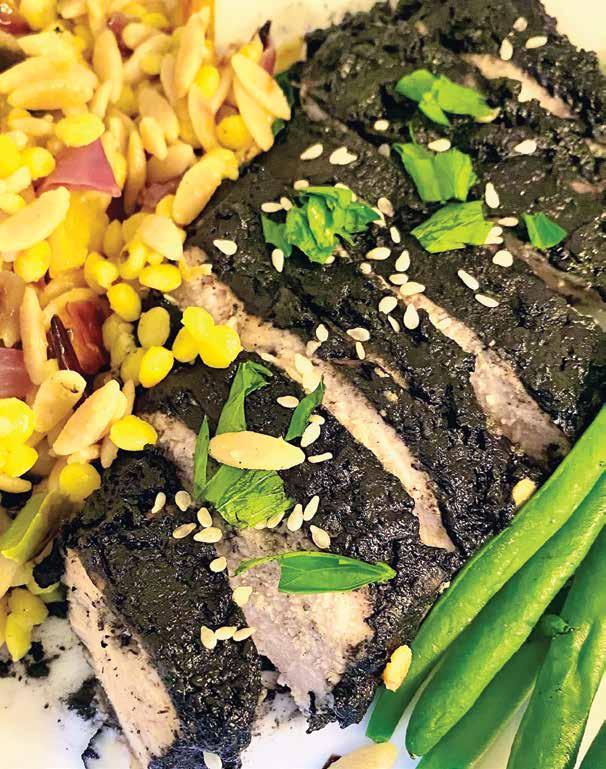
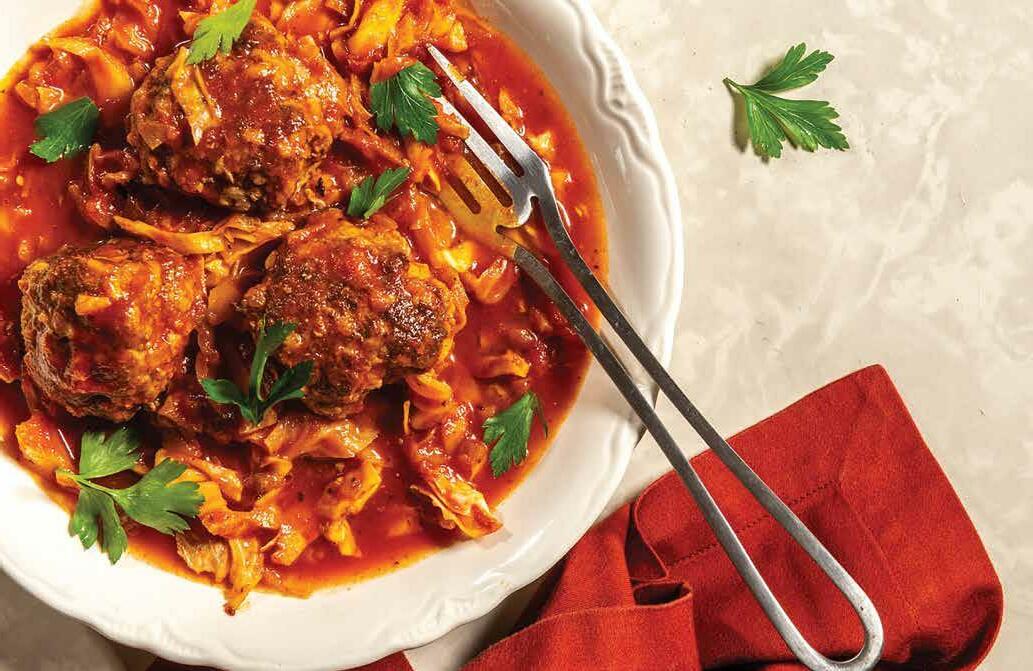
By Kenneth Friedman 14

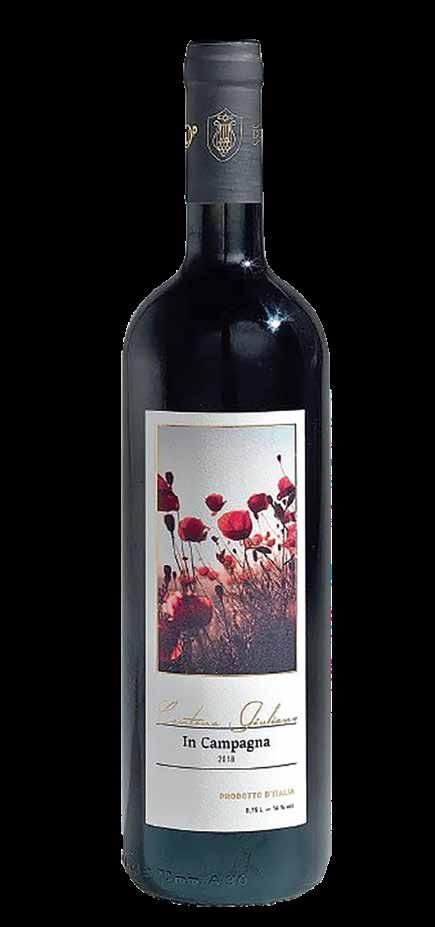
By Elizabeth Kratz 17

 By Elizabeth Kratz
By Elizabeth Kratz
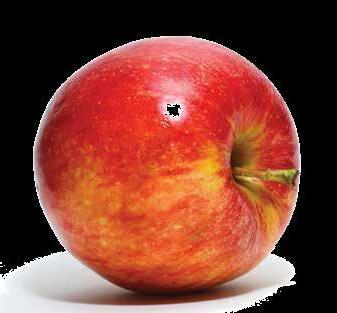

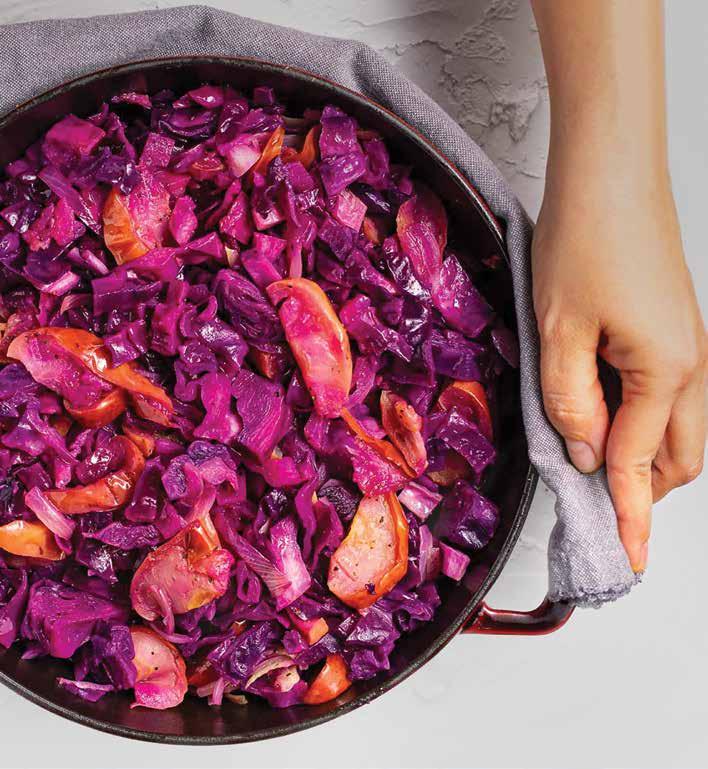 By Nina Glick
By Nina Glick
 By Michal Rosenberg
By Michal Rosenberg
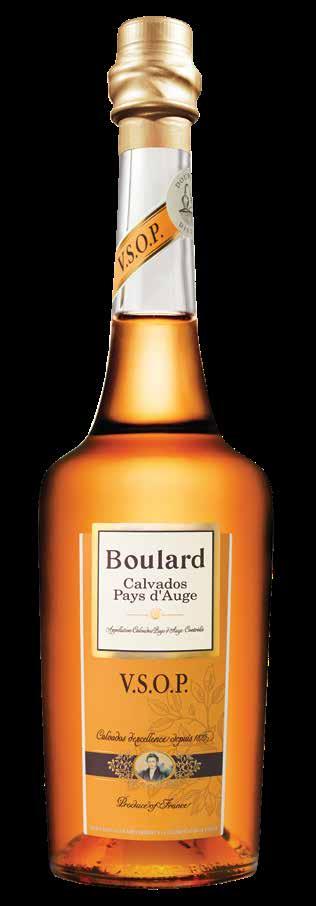
 By Gamliel Kronemer
By Gamliel Kronemer
Show-stopper recipes to make in advance for easier hosting.
By Bracha SchwartzWhether you’re hosting a simcha for hundreds at a venue or making a family party at home, surround your guests with the vibrant colors and warm flavors of fall.
Esther Katz, Extraordinary Events by Esther (Instagram.com@extraordinary_ events_by_esther), brings in seasonal touches to all her parties. With multiple simchas coming up, she’s thinking of all the ways she can add the essence of autumn to her décor and menus. For fall, it’s about getting cozy and bringing in warm colors like hunter green, sage, gold and burgundy. The bat mitzvah girl may want pink décor, but you can’t get pink peonies in the fall. Katz works with florists to blend in what’s available with what the client wants. Even when pastel pink plays a leading role, the food can reflect the season. A fall bat mitzvah can start with hot apple cider served in mugs, accompanied by hot pretzels and knishes. Perfectly cooked chicken is delicious in all seasons, but a wild rice stuffing gives it the taste of autumn.
Once the sukkah walls come down, many families will start planning for Thanksgiving, just over a month away. This is one of Katz’s favorite meals to host at home; she will have her entire extended family over for the celebration. Katz likes to have autumn decorations, like napkin rings made out of twigs, and intertwined dried flowers with fresh ones that she gets that day.
She likes gorgeous disposable plates, large and small, but says it can be fun to mix them up—combine plates that have
The Katz family at Thanksgiving.

gold rims with solids; put a lightweight small plate over a heavier large one. They look best on real fabric table cloths. She always has a seating plan. Since she hosts each year, she is careful to change the place of honor—which grandchildren sit next to the grandparents. People like to sit next to the host, so she also switches who sits next to her and her husband, Elie, each year. Place cards ensure the plan. Katz writes each name and her
now 9-year-old daughter puts something special on it, like a smiley face for Savta, or a rainbow and flowers for herself. She saves her decorations and puts the kids’ past projects on the table to evoke fond memories.
Casual elegance best describes Katz’s approach to food. “Keep it easy,” she advises. “If you’re the hostess, plan ahead. Know what each person is bringing and write a card—‘Shoshana’s potatoes’ or
‘Mom’s salad.’ Some guests will want to bring their tried-and-true signature dishes, but encourage creativity. New twists can freshen up the meal.”
Katz likes to make polenta rounds with sauteed mushrooms, thyme, garlic and wine. She varies the string beans— sometimes with a teriyaki sauce or sautéed with mushrooms or cashew nuts. Pretty but informal serving dishes add a nice touch. All-white is always correct, but mixing in a fall color like hunter green adds visual appeal. Katz notes that everyone gathers in the kitchen but they know that’s where the work gets done. Don’t feel you have to cover the counters or a nice granite island. A drink station with assorted beverages, nuts and hors d’oeuvres lets people get comfortable as soon as they come in. She serves a variety of wines for all tastes from sweet to cabernet sauvignon and pinot grigio.

There’s also Champagne for the adults and sparkling cider for the kids. Desserts are brought by guests. There’s usually a good selection including apple pie, lemon meringue pie and cookies.
The family divides the tasks for the day. Katz is in charge of décor, purchasing and preparing side dishes, including alternatives for people with food allergies. Her husband, Elie, is the family turkey chef; he makes a whole turkey plus a big package of drumsticks for the kids and another breast and thigh, so there is always enough for everyone to have their favorite part. He also makes a special gluten-free stuffing for his wife—and any other gluten-free guests—in addition to his traditional rendition. He uses Trader Joe’s glutenfree bread, vegan butter, lots of sautéed onions, garlic, mushroom and chicken broth. The three Katz children help with making and hanging decorations, setting the table and some of the cooking.
A successful event takes planning to make each element contribute to the overall ambience. “When my family walks in for Thanksgiving, they smell the
turkey, stuffing and sweet potatoes, and see the gorgeous flowers and candles on the tables,” said Katz. “The kids see I saved their precious artwork. It all comes together and makes everybody feel cozy and comfortable. Guests appreciate and notice all the special touches. And food always makes people happy!”

· 2 polenta logs, found at Trader Joe’s or ShopRite
· 2 pounds cremini mushrooms (or a mix of exotic mushrooms like portobello, oyster and chanterelle)
· Four shallots thinly sliced into rounds
· Five cloves garlic, minced
· ¼ cup white wine
· Vegan butter
· Olive oil
· Sea salt
· Freshly cracked pepper
· Fresh thyme sprigs
➀ Slice polenta into even rounds about ½-inch thick.
➁ Clean the mushrooms by taking a wet paper towel and cleaning off any dirt.
➂ Slice mushrooms thinly. Sauté in olive oil, until lightly brown, then add ¼ cup of wine. When the wine gets cooked, set aside the mushrooms.
Mushroom Polenta.➃ Sauté the shallots in a few teaspoons of olive oil till soft and golden browned.
➄ In a separate pan, sauté the polenta rounds in a few teaspoons of olive oil; season with salt and pepper.
➅Place 10 sprigs of thyme and add the garlic towards the end; this will probably need to be done in batches.
➆Add onions and mushrooms, and 3 tablespoons of vegan butter. Toss for a couple of minutes
➇Place everything in a roasting pan and bake at 350 F for about 15 minutes until everything is nicely browned. Whatever you make will be gobbled up!
Chanie Apfelbaum, author of the “Busy in Brooklyn” blog (www.busyinbrooklyn.com) and “Millennial Kosher” cookbook, thinks that sitting by a fireplace with a warm drink like hot apple cider or mulled wine with cinnamon sticks, cloves and nutmeg, is a quintessential fall delight. “I love those warm flavors and spices,
and they make your kitchen smell amazing,” she said. Gingerbread is one of her favorite fall flavors. She uses it in cookies, roasted nuts, salads, granola, cakes, and even as a garnish for soup.
Apfelbaum loves using fruits for both sweet and savory dishes. In “Millennial Kosher” she has a recipe for Fall Harvest Apple and Honey Roast. Fresh figs are another favorite. On her blog, she has roasted salmon with a sauce made from figs, ginger and soy. Pumpkin is the star of pies and cakes, but it also goes well with savory dishes like her Gnocchi With Pumpkin Alfredo Sauce. Best of all, you can use canned pumpkin instead of fresh, with no loss of taste or texture. Fall fruits will keep their shape when baked to add beauty to delicious desserts. With a tart or tarte tatin, you have a gorgeous presentation plus the delicious taste of pears, apples or figs.
Apfelbaum goes to a friend each year for Thanksgiving and brings something—usually from one of the many recipes she’s testing. She has brought gingersnap cookies, gingerbread cupcakes and tahini pumpkin pie. Another fall dish she makes often is cranberry sauce. It’s easy to make at home with fresh cranberries and tastes better than canned. Her pro tip: Cook fresh cranberries in a liquid other than water. She has used red wine, apple cider and pomegranate juice. She sweetens it with maple syrup or honey, which is a little healthier. A sprinkling of orange or lemon zest adds even more flavor.
or filled with a rice pilaf with pomegranate seeds. Small squashes make excellent fall decorations on a table. You can also make a slit in each one to place a name tag. You can do the same thing with chestnuts. Apfelbaum loves the flavor and texture of chestnuts. She buys the already peeled version and roasts them again with olive oil and spices like ras el hanout or herbes de Provence to make them even better. They make a tasty garnish crumbled over soup.
Adapted from “The Collegiate Baker”
· 2 cups flour
· 1 teaspoon baking soda
· 1 teaspoon baking powder
· 1 ½ teaspoons ground ginger
· 1 ½ teaspoons ground cinnamon
· ½ teaspoon ground nutmeg
· 1 cup sugar
· ¾ cup brown sugar
· ½ cup oil
· 1 teaspoon vanilla extract
· 2 eggs
· ⅓ cup molasses
· 1 cup hot water
➀ Preheat oven to 350 F.
➁ Add the flour, baking soda, baking powder, ginger, cinnamon, and nutmeg to a bowl and whisk to combine.
Katz’s place setting.

For entertaining, fruits and vegetables can make beautiful serving pieces and decorations. Larger squashes like acorn can be the base for serving the scoopedout and puréed or sautéed flesh,
➂ In a separate bowl, mix the oil, sugar, brown sugar and vanilla. Add eggs and mix to incorporate. Add the molasses and stir to combine.
➃ Add half of the dry ingredients and half of the hot water to the wet mixture and mix until incorporated.
➄ Repeat with the second half of the dry ingredients and hot water.





➅Fill cupcake pans about ⅔ full and bake for approximately 18 minutes, until a toothpick inserted comes out clean.


· 1 (8-ounce) container whipped cream cheese
· 4 tablespoons softened butter
· 1 cup confectioners sugar
· ¼ cup brown sugar
· ¼ teaspoon cinnamon
· ½ teaspoon vanilla
Directions:
➀ Add the cream cheese and butter to a bowl and mix with a spoon to combine.
➁ Add the brown sugar, cinnamon and vanilla and mix until incorporated.
➂ Add the confectioners sugar ⅓ cup at a time, stirring until thickened.
Some of my most treasured recipes come from cooking classes I took with Karen Sheer at the Jewish Community Center on the Palisades many years ago. I make her Citrus Turkey With
Marsala Gravy every fall. Now living in Greenwich, Connecticut, Sheer is busy developing and testing recipes for her blog, “A Zest for Life” (www.azestforlife. com). The blog also provides advice on cooking tools. techniques and the reasons she recommends using organic products.
“A Zest for Life” is easy to navigate. The recipe index is divided into categories including seasonal ones. Click on “Fall” for loads of inspiration including over 20 recipes for squash and apples. Sheer likes to cook with what’s in season, and for fall that means plenty of apple recipes. She urges everyone to make their own applesauce. By putting in the peels and then straining them out, you get a delicious pink sauce that’s visually more attractive and healthier than commercially produced products since you make it without corn syrup. And you can’t beat fresh applesauce with latkes.
One of Sheer’s favorite fall recipes is Braised Sheet Pan Chicken—chicken thighs share the pan with delicata squash cut in circles, shallots, broth and an apple cider glaze. Another is Braised Tzimmes Chicken, which can be found in both the Fall and Passover sections on the blog. Chicken thighs, shallots, carrots and prunes are sauteed and braised on the cooktop with a balsamic, rosemary and honey sauce, then baked in the oven.
Kabocha Squash Soup with Cashew Crema has classic fall flavors. Cashew crema is a whipped-cream substitute that is healthier and keeps dishes pareve. Sheer doesn’t keep kosher at home but learned the principles teaching at the JCC. Most of her recipes can be made with kosher ingredients or an easy swap. An Apple Waldorf Salad makes a lovely light lunch or first course. It can be made pareve easily with nondairy yogurt. Sheer is a big proponent of fresh food with as little processing as possible. “Many commercial items like ketchup and mayo have ‘natural flavors’ that aren’t natural,” she said. “They are
chemicals made in a laboratory sold to food manufacturers to alter the flavor. It’s easier and better to make them yourself, or source organic ingredients. It’s important to know what’s in your food.” To that end, Sheer’s favorite place to be is the farmers’ market near her home, which is open all year. It’s where she can see what’s in season and meet the farmers.
Sheer learned about food as a student at the New York Restaurant School. After graduating, she worked at Gourmet magazine with Jackie Kennedy Onassis’ former chef, and then became a private chef, along with being the mother of small children. She had several clients who belonged to the JCC and urged her to give cooking classes there. From her years as a private chef, Sheer learned how to pace a meal and keep the courses flowing smoothly. She reminded me of the No. 1 guideline for anyone hosting a meal: Make as much as possible ahead. When guests are expected, you want to pop the dishes in the oven and pull the salads and dressing out of the fridge. That’s how to enjoy your company, and that mulled wine, with a minimum of stress.
Serves 10, or 8 With Larger Bowls.
· 1 medium kabocha squash (6 cups), from a 2 ½-pound squash
· 2 teaspoons coconut oil, organic, or neutral oil
·
1 cup shallots, peeled, coarsely chopped
· 1 tablespoon fresh garlic, peeled and minced
·
1 ½ teaspoons curry powder
· 1 teaspoon garam masala
· ¼ teaspoon crushed chile peppers, adjust to your level of spiciness
·
2 cups fresh apples, peeled, coarsely chopped (I used Macoun apples)
Gingerbread Cupcakes.·
4 ½ cups vegetable broth*
· 1 cup fresh apple cider (check ingredients for no preservatives)
· Salt
· Pepper
· Cinnamon
· 1 cup raw cashews, divided (half for Cashew Crema). See recipe: Cashew Crema
· Spiced cashews (garnish). See recipe below.
➀ Soak raw cashews in plenty of cool water to cover by 1 inch to soak. Cover and let stand for 6 hours or overnight. Drain, rinse and divide—will use ½ cup for the soup and ½ cup for Cashew Crema.
➁ Cashew Crema:
To the carafe of a blender add ½ of the soaked raw cashews with ¼ cup coconut milk and ¼ cup filtered water.
Add flavorings: ½ teaspoon apple cider vinegar, 1 teaspoon pure maple syrup, a pinch of sea salt and a big pinch of cinnamon.
Blend all on low to high speed until very creamy and smooth, about 30 seconds.
(No need to clean the carafe if making the soup next!)
Remove to a clean glass bowl or container. Refrigerate if not using within an hour. Will stay for about 5 days.
➂ Soup:
Prick the kabocha squash all over with a fork and place in a microwave on a plate.
Cook until squash has softened, and you can easily cut through it: 5-6 minutes.
Cut squash into 8 large wedges, remove and discard seeds.
Cut away and discard peel—this should be quite easy, as the skin has softened.
Cube the squash into 1 ½-inch pieces.
In a heavy, non reactive soup pot (I used an enamel coated cast iron one) add coconut oil, melt over medium heat.
Add the squash, stir to incorporate for 3 minutes until lightly browned.
Add the next six ingredients: shallots, garlic, curry powder, garam masala, crushed
chile peppers and apples. Stir and cook over medium heat for 3 minutes to lightly color the ingredients and toast the seasonings.
Add the vegetable broth and apple cider, raise the heat, bring to a boil.
Cover, turn heat down to low and simmer for 15-20 minutes, until all has softened nicely.
Take off heat and cool slightly.
To the carafe of a blender: Add half the soup with ½ cup soaked, raw cashews. Blend low to high speed about 30 seconds, or until very smooth. Pour into a large bowl or pot.
Blend the second half of the soup for just 5 seconds—or until a little chunky. (You may also blend very smooth.) Add to the other soup and mix well.
➃ To Serve:
Ladle soup into individual bowls. Top with Cashew Crema ~ Dollop some on the side of soup, and drag a sharp knife through it to create a pattern.

Top with Spiced Cashews and fresh herbs (I used marjoram leaves.)
➄ Spiced Cashew Garnish:
Heat ½ teaspoon coconut oil in a small 7-inch skillet over low-medium heat. Add ¼ teaspoon curry powder and ¼ teaspoon garam masala.
Stir to toast spices for a few seconds. Add ¼ cup raw cashew halves; stir and cook until they are lightly golden brown.
Kabocha Squash and Apple Soup. By Kenneth Friedman
By Kenneth Friedman
sAthe days grow shorter, and the wind gusts start sending a chill down your spine, and we settle back into our post High Holidays routine, we revisit the evening glass of wine with perhaps a heartier meal than its summer season counterpart. I’m not at all suggesting the more popular unhealthy comfort foods, but just something with a little more meat on the bones to, well, put some more meat on our bones.
For many, the fall season is a favorite. With the changing colors of our landscape comes bountiful local produce. An incredible array of apples, bell peppers, cabbage, all kinds of hearty root vegetables … the list is long, colorful, and tasty.
I also love fall, and not because my children are safely tucked back away at school for the year (I actually prefer the low-stress summer months, call me crazy), but rather for the warmth and comfort of the multitude of food and wine options and pairings. Let’s dive into some of my family’s favorite fall eats and some wonderful wines with which to pair them.
Wine and food are inherently personal. Whether it be the treasured recipe that was handed down mother/ father to daughter/son (happily, we live in a world where the kitchen is the playground for all) or the memories of a favorite dish (I swear I can still “memory-smell” the foods I grew up on), we connect deeply with the food of our youth.

My dad’s favorite course was always soup. He would be happy if nothing else were served. He’d also find a way to turn it into a meal, adding all kinds of extras to fill it out. I learned a great deal about the enjoyment of a meal from my dad. Don’t rush it. Savor. Enjoy your family.
One of our longtime staple soups was a split pea soup, the recipe coming from an adopted Bubby of sorts, a Holocaust survivor my mom looked in on. Her thanks to my mom often came in the form of this rich green broth. We were lucky enough to be handed down the recipe, and my kids have even learned to reproduce this simple masterpiece. My eldest daughter, off this year to seminary in Israel, is a longtime vegetarian (gasp!) so while one can always add beef to this recipe, we love it without. (Still, some smoked brisket thrown in is a thing of beauty!)
· 2 pounds split peas
· ½ pound mushrooms
· 4 carrots, rinsed and chopped
· 1 parsnip, rinsed and chopped
· 1 onion, minced
· 4 stalks celery, chopped
· 2 packages noodle soup mix
· 2 Osem vegetable cubes
· ½ stick margarine
· Fresh dill, chopped finely
➀ Mrs. Sandler’s technique, but I saute the mushrooms, carrots, parsnip, onion and celery until lightly browned in the ½ stick of margarine. Add the split peas, noodle soup mix, and finely chopped fresh dill.
➁ Fill the pot halfway.
➂ Slowly bring to a boil.
➃ Turn down heat to simmer, stirring constantly to avoid burning, and cover. ➄ Soup is done when split peas are totally broken down and integrated.

To paraphrase the late, great Rodney Dangerfield (née Jacob Rodney Cohen), “What’s a meal without bubbles?” I love to start, accompany, or finish any meal with a bottle of bubbly. Don’t get caught up in the whole idea that bubbly is only for special occasions. Today is the most important occasion. And today, the kosher wine world has lots of affordable options, whether it be actual Champagne, or one of its sisters, such as Cava, Prosecco, sparkling wine, or others. But if you want one made in the same method as Champagne, but at just a fraction of the price, look no further than the Gilgal Brut, hailing from the Golan Heights. Made from 50% Pinot Noir and 50% Chardonnay (two of the three traditional Champagne varieties), and aged for at least a year in the bottle, the Gilgal Brut is perhaps the finest sparkling wine in its price category. On the nose, bright citrus, green apple, some yeast. The palate shows tightly-packed fine bubbles and a beautiful tart acidity. A tremendous buy whenever you can get it. You can even age it a few years to add more of the “older Champagne” notes such as brioche and yeast.
$20, 12% ABV, non-mevushal.
When considering the next “fall dish,” I really wanted to include a writeup on smoked salmon. It’s easier than you think and there’s just no replacing it on your menu. Alas, we’ll save that for another time, but I would suggest buying yourself an inexpensive upright electric smoker and learning the ropes. Yes, this is for the mildly adventurous, and must be done outdoors, but the payoff is grand. With that on the back burner, let’s skip to another wonderful appetizer (which would easily be filling as a main).
Unstuffed cabbage.
While working on this column, like any smart writer, I did my research. And any real research on cooking for me begins with my mom. I called mom and asked if she would mind me publicizing (and perhaps popularizing and immortalizing) her recipe for meatballs and cabbage. Once she acceded, I said, “OK, why don’t you send me a picture on WhatsApp of the recipe? I’d love to use it.” Several hours later, after many failed attempts by mom to learn WhatsApp, we finally achieved success. (OK, I went over to her house and showed her how to use it in person.) Interestingly, my dad had “done his part” in the recipe, and had typed it up for her.
· 3 pounds cabbage
· 2 onions sliced
· ½ cup Craisins
· Large apple, cut up
· 2 or 3 pounds ground beef
· ½ cup matzo meal
· Pepper
· Paprika
· Garlic powder
· 1 egg
· ½ cup rice, optional (my mom does not use rice)
· Mix together and form balls
· 1 large can whole tomatoes
· 1 large can tomato sauce
· 1 small can tomato paste
· 2-3 cans water
· ½ to ¾ cup brown sugar
· ½ lemon
➀ Place half of cabbage with apples, onions in a pot.
➁ Place meatballs on top.

➂ Add remaining cabbage mixture on top.
➃ Add sauce to cabbage and meatball mixture; bring to a boil.
➄ Cook 1 ½ to 2 hours
Here’s a perfect opportunity to bust out a nice Italian red wine with a saucy, savory dish. I think Italy is my current favorite wine region, and luckily this coincides with the welcome influx of Italian wines coming to our shores from a variety of importers, including Allied, M&M, Royal and The River Wine. With this in mind, let’s provide a variety of choices—wines I am currently
Cantina Giuliana, In Campagna, Rosso Toscana, IGT, 2019
Anyone who knows my wine tastes knows I love merlot. Considering I also love Italian wine, this is a perfect choice for me. I hope you’ll agree. In the glass, deep burgundy red, clear. Fresh nose of red raspberry, blackberry, green herbs, earth and a touch of smoked meat. The palate shows a medium body, focused bright acid, mouth-coating and long-lasting tannins. Juicy red and

dark fruit, earthy, some gaminess. There is some heft for a Tuscan red. 14% ABV but does not seem overbearing. Very nice wine.
$18, 14% ABV, non-mevushal.

Another lovely wine, which you can find under $20. In the glass, ruby red with bluetinged rim. Clear and light.
On the nose, lots of “red,” cranberries, raspberries, unripe, tart cherries and some earthiness. On the palate, the definition of medium-bodied wine, with medium-plus acid, and mouth-coating tannins. (Tannins, which come primarily from the skins and stems of grapes, are identifiable as the dry sensation in your mouth. A good example is similarly found in black tea.)
$18, 14% ABV, non-mevushal.
Probably our most reliable fall(back) dish is chili. Deeply satisfying, rich, with a warmth that permeates your soul, chili is also a dish that has so many options. Over the years, we’ve generally settled on this recipe which, through toying and tinkering, has found a place as a household staple. Utilizing the Sephardic North African chili paste or powder called harissa gives an entirely new element to the traditional seasonings. Harissa is easy to make or you can find it in more extensive kosher shops. Pereg Spices makes one that I use. This recipe also utilizes chickpeas versus the more standard black or kidney beans.
· 2 tablespoons olive oil
· 1 large yellow onion, diced
· 1 tablespoon minced fresh ginger
· 6 garlic cloves, minced (about 3 teaspoons)
· 1 pound ground beef
· 2 large carrots, rinsed and chopped into rounds (I don’t peel my carrots)
· 1 large can diced tomatoes, with juice
· 1 green pepper, diced
· 1 cup chicken stock
· 5 tablespoons mild harissa, or 3 to 4 tablespoons spicy harissa
· 1.5 tablespoons cumin seeds or powdered cumin
· 2 teaspoons smoked paprika
· Pinch cinnamon
· 1 can chickpeas, drained and rinsed
· 1 tablespoon kosher salt
· 1 teaspoon freshly ground black pepper
· ½ cup cilantro, chopped (optional—if you like cilantro!)
➀ Heat the oil in a pot; add onions, ginger, garlic. Stir and add beef. Stir until beef is browned.
➁ Add carrots, tomatoes, pepper and stir for a few minutes.

➂ Add chicken stock. Then add seasonings (cinnamon, cumin, harissa, smoked paprika).
➃ Bring to boil then reduce and add chickpeas and salt and pepper. Simmer for another 20-30 minutes.
If you decided “yes” on the cilantro, now’s the time to garnish your bowl and serve.
Louis Blanc, CrozesHermitage, AOP, 2015
Moroccan spice lends itself to an equally spicy wine. Wines from the northern Rhône appellation of CrozesHermitage are predominantly made with Syrah, and Syrah is known for its fruit and spice, big enough to complement this bold dish. I’ve chosen the Louis Blanc, Crozes-Hermitage, AOP, 2015. Made from 100% Syrah, in the glass we find a deep dark ruby red to purple. Intense nose of black fruits, blackberry and fig. Spices: anise and licorice.

Smoked meat, loamy earth, and tobacco. On the palate, mediumplus to high acidity, mouth coating tannins, full bodied, with sweet, dark fruit. Medium finish. Nice balance and nice wine, which can still age and improve.
$32, 13% ABV, non-mevushal. I hope you enjoy these dishes and wines as much as my family does. As always, I love any commentary and can be found on Instagram @kosherwinetastings
Moroccan Beef Chili.Asthe kosher-keeping community continues to seek variety and depth within the world of wine, a new interest has emerged in wines from the American Pacific Northwest, and particularly in pinot noir from
from the east and west from the Oregon Coast Mountain Range to the Cascade Mountains. At just over 5,350 square miles, it is Oregon’s largest AVA, and it contains most of the state’s wineries; approximately 900 as of 2021.
released and has just arrived in stores this fall. Managing one of the larger cellar programs in the state, he is a native Oregonian who has been working as a winemaker since 1993. He also makes kosher wines—as he calls it, as part of his Eola Hills-based winery’s “custom crush program”—all from Willamette Valley. These projects are expected to grow and expand this coming year.
Willamette Valley has been compared to Burgundy both because of its mineral rich soil and cool climate. However, the U.S. viticultural policies are also not as restricted by tradition as in France, which has rigid laws regarding when one can pick, how much one can pick, or how much one can make from a hectoliter of grapes, said Anderson, in a phone interview.
the well-known Willamette Valley American Viticultural Area (AVA) in Oregon, which is increasingly compared to the world-famous terroir of Burgundy, in France. Willamette Valley stretches north to south from the Columbia River to Eugene, and

Just one of those wineries is currently making kosher wines.
Steve Anderson is the winemaker who made the Twin Suns Reserve Pinot Noir 2021, which is newly

“We have volcanic soil, irons, silica-rich and limestones. One of our legacy vineyards actually also has marine sediment, so in the space of 20 meters, there is a difference between the vines that were planted on virtually the same day, with the same root stock.
 Steve Anderson is the winemaker for Twin Suns Reserve Pinot Noir.
Steve Anderson is the winemaker for Twin Suns Reserve Pinot Noir.
 By Elizabeth Kratz
By Elizabeth Kratz

This summer I had the opportunity to taste and cook with an impressive array of small-batch, artisanal products from De La Rosa 613, the Florida-based manufacturer and purveyor of highquality organic and kosher oils and vinegars. They also import awardwinning organic, kosher Austrian wines and grape juices from Hafner, a winery in Mönchhof, Austria, where I also had the opportunity to visit in August; the winery visit will be included as a feature in next spring’s Jewish Link Wine Guide.
Speaking with Yehudith Girshberg, now CEO and operator of De La Rosa 613, I learned about the goals of the company and her husband’s original vision for the import of healthy and kosher oils and natural foods. De La Rosa started as an oil company, importing organic and conventional olive and grapeseed oil from Italy, and Styrian pumpkin oil from Austria. Rabbi Asher Girshberg, z”l, was initially an importer and producer, beginning in the 1980s, of oils and other products long considered a healthy staple of the Mediterranean diet. He and Rebbetzin Yehudith married in 2010 and built up the business together before his illness, with Yehudith taking on more and more
The Girshbergs with their first avocado oil release in 2016.until and after his passing in 2016.
Rabbi Girshberg’s business was the first entity to import grapeseed oil from France to England. While visiting France, he noticed that people took grapeseed oil supplements bought in pharmacies, and learned that it contained Omega-6, which has been shown to lower cholesterol levels. He sought out research from experts, which also indicated that cooking with such oils did not decrease their efficacy. He then reached out to rabbanim to discuss whether grapeseed oil was considered yayin nesech (poured wine, subject to the laws of mevushal), and whether it would have complications gaining the required kosher certifications.
“It was a big deal at the time, in the 1980s, but ultimately the Chasam Sofer concluded that the oil is miskanah (changed through processing), and it bears no resemblance to the original product,” said Yehudith Girshberg. All of De La Rosa 613’s products carry multiple well-known kosher certifications, including those from local rabbanut organizations in Austria, Spain, Belgium, Mexico and elsewhere, as well as their internationally recognized counterparts. They also carry organic certifications when possible.
Girshberg added that during her husband’s life, they added avocado oil to the company’s offerings. “Avocado oil is an Omega-3 and 6, and presents a blend of different types of nutritional benefits, even more than grapeseed oil. It has a higher smoke point, oleic acid, and is high in lutein, which is good for the eyes,” she explained. A higher smoke point is important because any time an oil is heated to the point of burning it becomes a carcinogen.
Initially, she shared that they weren’t sure that avocado oil would
be a profitable enterprise, “because it was twice the price of grapeseed even though it was healthier.” However as the product has increased in global popularity, De La Rosa 613’s avocado oil has sold well and has eclipsed sales in grapeseed. Currently, Girshberg’s De La Rosa cold-pressed avocado oil is imported from Spain.

De La Rosa 613 also began importing specially made formulations of fruit and balsamic vinegars and grape juice, including the “Wow” organic grape juice made by Julius Hafner in Austria, which was initially certified by Rabbi Yonah Schwartz, the mara d’asra (head of community) of Vienna. “We got a 48-bottle sample shipment for trade shows, and the first trade show where we brought it, so many people said, ‘Wow!’ when they tasted it, we changed its name,” Girshberg recalled.
The Wow organic red grape juice is by no means the standard concord grape drink common on so many Shabbat tables, but instead a more delicate, honeyed combination of pinot noir, zweigelt and merlot grapes. The toughest critics in my house, including my 11-year-old twin daughters, declared it truly delicious.
Girshberg shared that many customers buy the Wow grape juice by the case, monthly or every two months, through the company’s website. “The traditional stuff is concentrated grape juice with water added. Our grape juice is more expensive, but anyone who tries it ends up stocking


it,” she said. In Austria, my children also tried the winery’s white grape juice, and described it inspiringly and poetically, with notes of peach and honey. This product is also available online at De la Rosa’s website or Amazon, and Girshberg said it’s not just my children who like it; the white grape juice recently won a gold trophy at the 2022 Specialty Food Association’s SOFI awards.
De La Rosa 613 imports black toasted and white unrefined sesame oils from Mexico, and nutty, rich tahini paste that is vegan, non-GMO, no salt added and shockingly flavorful; as well as white balsamic and dark balsamic glazes, products of Spain, which have no added sugar or any unnecessary additives or ingredients.
Finally, the raw and unfiltered organic Spanish raspberry and pomegranate vinegars have no additives, no sugars and have truly superior taste, ideal for salad dressings of all types. In recent years De La Rosa 613 has infused flavors into its extravirgin cold-pressed olive oils, including lemon and basil, hot chili and white and black truffle. The truffle products, which include truffle salt, are made in Italy to De La Rosa’s specifications. All these are useful cooking ingredients that I was able to use successfully in a variety of weeknight and Shabbat recipes. Here are just a few examples.

Ingredients:
· 3 parsnips, peeled and sliced roughly
· 3 carrots, peeled and sliced roughly
· 3-4 pre-cooked and peeled beets, sliced roughly
· 2 teaspoons De La Rosa 613 truffle salt, plus extra for finishing
· 3 tablespoons De La Rosa 613 100% pure avocado oil
·
1-3 tablespoons fresh herbs such as thyme, rosemary and sage
·
2 cloves of garlic, chopped
· 1-2 tablespoons De La Rosa 613 White Balsamic Glaze, for finishing


Directions:
➀ In a bowl, combine vegetables with oils, herbs, garlic and salt. Correct seasoning and add black pepper if necessary.
➁ Roast on a large, parchmentcovered baking sheet at 400 F for 45 minutes to 1 hour, or until nicely browned. Check halfway through and stir vegetables with a wooden spoon to ensure even cooking.

Ingredients:
For the salad:
· 2 bags Bodek or checked fresh baby spinach, or a combination of mixed baby romaine, arugula or your favorite fresh salad blend
· 1 handful dried cranberries or fresh pomegranate seeds
· 1 handful roasted unsalted sunflower seeds pecans or toasted pine nuts (or substitute feta cheese)
· ½ butternut squash, diced and roasted with De La Rosa 613 extra-virgin olive oil infused with lemon and basil, with salt and pepper to taste
For the dressing:
½ cup De la Rosa 613
Extra Virgin Olive Oil
With Lemon and Basil
·
2 tablespoons De La Rosa 613 Pomegranate Vinegar
·
1 tablespoon De La Rosa 613 Balsamic Vinegar Glaze
·
½ teaspoon dried rosemary
·
1 teaspoon garlic powder
·
1 teaspoon kosher salt
·
Directions:
½ teaspoon ground black pepper
➀ Roast butternut squash and cool.
➁ Combine with fresh salad ingredients.
➂ In a separate bowl, mix and whisk dressing ingredients and let sit for 15 minutes to overnight.
➃ Whisk again and combine with salad ingredients right before serving.
One-Pan De La Rosa Chili and Truffle Salmon With Roasted

Cauliflower and Kale
Ingredients:
·
1-3 salmon filets
·
1-2 heads of cauliflower, cut and parboiled (boil in salted water for 10-15 minutes before roasting, or until easy to pierce with a fork)
·
1 bag Bodek or checked baby kale or spinach, for roasting
·
1 tablespoon De La Rosa 613 Extra Virgin Olive Oil Infused With Hot Chili (this is mild)

·
1 tablespoon De La Rosa 613 100% Avocado Oil

· De La Rosa 613 Truffle Salt, to taste
· 1 full tablespoon of onion powder, or more, to taste
· Hot Chili Flakes (to taste)
· ½ to 1 tablespoon De La Rosa 613 Black Truffle Oil, for finishing (and to taste, this is very strong!)
➀ Place drained, parboiled cauliflower on half of a parchment paper-covered baking sheet.
➁ On the other half, place the greens of your choice and the salmon on top.

➂ Sprinkle with oils and spices.
➃ Bake at 400 F for 10 minutes and then broil for 5 minutes to reach desired brownness.
➄ Top with a small splash of black truffle oil. Serve on the sheet pan or plated, hot, with all three elements.
Learn more about De La Rosa 613 at https:// delarosa613.com/ products/. Many De La Rosa 613 products are also available in kosher and gourmet stores nationwide.
· 4-6 whole chicken breast cutlets, boneless chicken strips, boneless thighs or thighs on the bone
· 1 cup De La Rosa 613 Black Tahini (when opening a new jar, mix until combined)
·
·
Juice of one half lemon, or more, to taste
·
¼ cup De la Rosa 613

Extra Virgin Olive Oil

· 2 full heads of garlic, with the tops cut off (ready to roast)
· 1 teaspoon kosher salt
· 1-2 teaspoon sweet paprika, or more, to taste, and/or hot chili flakes (optional)
· ½ teaspoon ground black pepper


½ teaspoon ground cumin (optional)
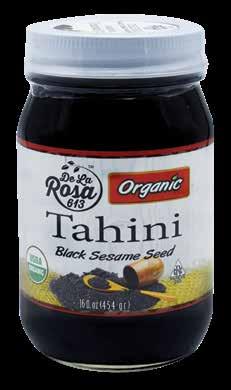
·
1 tablespoon toasted sesame seeds, for a garnish
· Fresh chopped parsley, for a garnish
➀ Combine ingredients except for the chicken, and reserve a half cup of the marinade for a sauce.
➁ Place chicken in the remaining marinade and let sit for 30 minutes to overnight, in an oven ready, parchment paper-covered pan.
➂ Preheat the oven to 400 F and bake chicken, covered, in the
marinade for 45 minutes or until bubbly.
➃ Let bake or broil uncovered for an additional 5-10 minutes to crisp up chicken skin, if necessary.
➄ Finish with a sprinkling of sesame seeds and chopped parsley. Serve the roasted garlic cloves on a platter with the chicken and garnish with reserved sauce.
Since so much time is spent in the kitchen, it pays to incorporate some shortcuts to make our lives easier. Whether time-saving or money-saving, these little kitchen tricks will make a big difference!
Need a better way to get juice out of a lemon? Place the whole lemon in the microwave for seven to 10 seconds. Remove and roll back and forth in the palm of your hand. Cut open and juice will come pouring out much more easily.

Want to have steak fries that look just like the ones you would get in a restaurant? Cut off one end of your potato and place in an apple slicer. Voilà—steak fries!
Want to melt margarine in the microwave without it splattering all over? Place a paper wrapper over the measuring cup that you are melting it in. No splatter anymore.

Do you need to rescue salty soup? We’ve all heard of putting in a potato, but did you know that you can put a quartered apple in the pot? Remove after 10 minutes and the salt will come with it!
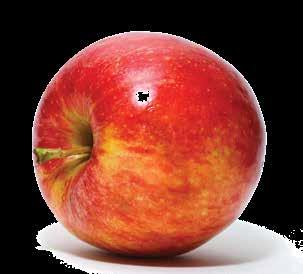


Kids love colored sugar on their cookies? Easy to make yourself. Combine sugar with a few drops of food coloring. Allow to dry on a flat surface for 15-20 minutes, and you no longer have to be annoyed when you realize you are out of it!

Did your cookies come out too hard, or did they go a bit stale? Put them in a bag with a slice of bread or challah. The bread will become stale and your cookies will soften.

Need to cut the slices of your cake in a more even manner? First cut a small circle in the middle of the cake, making a mini cake in the middle of the cake. Then cut slices surrounding the mini cake. Much easier to manage and have even slices. Then cut the mini cake in similar fashion.

Coffee is an important part of any office culture and it's no different at The Jewish Link. Since we are located in the heart of Teaneck’s restaurant area, we can certainly pick up a coffee at any of the local shops nearby, but sometimes, on busy days, we just can’t leave our desks—or don’t want to. Also these days, coffee, just like everything else I guess, has risen in price and it’s not reasonable to spend $6 or $8 for a latte and just want to go it at home— or in this case, at the office.

But our coffee station needed some work. We have a Keurig machine and some K-Cup options, but keeping fresh milk in the fridge has always been a challenge. Since Covid, everyone got used to working from home a bit more, but now that things have gotten mostly back to normal and we are back in the office again— especially on Wednesdays when the powers that be bring in lunch to lure everyone in on deadline day—we decided to up our coffee game and see if we could replace the expensive coffee run with a humble, homemade cup of joe.
After some research, we purchased a new Cuisinart Grind & Brew single-serve brewer machine from Bed, Bath & Beyond (thank you coupons) that grinds fresh beans into a reusable K-Cup and then brews an individual cup of freshly ground coffee. This also keeps the option open to just use a pre-made K-Cup instead.
Fresh beans are a game changer. With a nod to fall (and Jill) we went all in on flavored syrups, including pumpkin spice, and also bought an Aerolatte milk frother to see if we could recreate that Starbucks fall classic right here in the office.

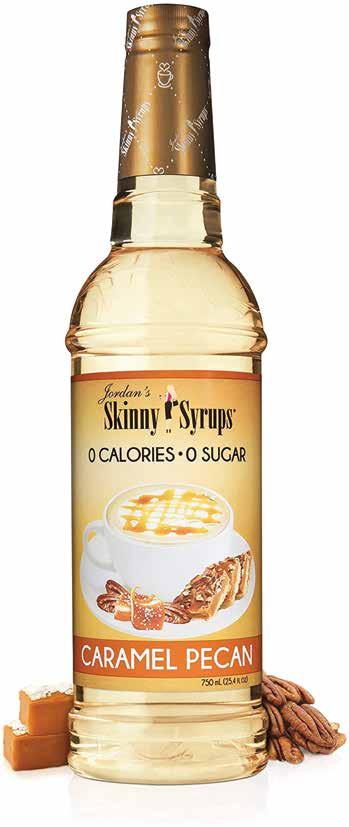

One Monday morning, we opened up all our deliveries, excited to try the new machine—but first we had to read the manual, which is nobody’s favorite part. We were finally ready, which was good because Elizabeth hadn’t had coffee yet that morning, and reasoned that she needed the old machine to make coffee in order to understand the instruction manual. We filled the canister on the machine
of having your own coffee setup— because how annoying is it when you try something new at the store and then don’t like it? You are stuck.
As everyone else in the office took a turn trying the new arrival, Channa pointed out that if you choose 10 or 12 ounces, the coffee was a little weaker than many would have liked. But the 8 ounce choice was solid with a good, robust flavor—and it still made a full cup.
with our Peet’s dark roast beans and listened to the whir of the grinder as the aroma of freshly ground beans filled the air. While the coffee was brewing we frothed the (fresh!) milk and watched it bubble up. The result was a very satisfying cup of coffee that was definitely a step up from what we had previously.
Elizabeth and I each tried one of the flavor syrups—mocha for her, pumpkin spice for me (Moshe chose salted caramel)—and while we initially liked it, Elizabeth and I each decided on our own that it was too sweet for our tastes (though Moshe added more milk and syrup). Since the machine is ours, we were able to go back as often as necessary and make a fresh cup catered to everyone’s palate. That’s the benefit
The milk frother we found to be a bit of a bust as the froth dissipated very quickly and since it wasn’t heated, that first sip of coffee was just cold, bubbly milk—not what everyone wants. So if you’re really into cappuccinos and lattes, it’s worth your while to spring for the fancier frothers (like the Nespresso, which also heats the milk) that deliver a more satisfying foamy experience.
We’re still gathering everyone’s impressions, but there’s no doubt the coffee experiment was a success. We expanded our coffee horizons and while not everything was a home run, it was fun to try new things, and we are definitely happier with the results. Now, if Moshe wants us to come into the office even more often, maybe Monday lunches can be on the table…


 By Gamliel Kronemer
By Gamliel Kronemer
When The Jewish Link asked me to come up with cocktails for autumn, I almost instantly knew that I wanted to write about cocktails made from Calvados. Calvados is a distilled apple cider, often blended from dozens of different apple varieties, which is aged in oak barrels for no less than two years, but often for much longer. Typically, Calvados is lightly sweet, and has flavors and aromas redolent of fresh and baked apples, with spices. When bottled, young Calvados can be as fiery as a young whiskey, but when well-aged it can be as smooth and supple as a fine cognac. At its best, Calvados has an innate ability to warm the body and put a smile on the face, making it a perfect autumnal tipple.
Calvados’s antecedents can be traced back to Charlemagne, the eighth-century King of the Franks and Holy Roman Emperor. During his long reign, Charlemagne perhaps spent more time in the field of battle creating his empire than among his French subjects; The welfare of his native France was always a special concern for the emperor. Many of his ordinances have had a profound and lasting effect on the French people.
One of Charlemagne’s lesserknown acts was an ordinance requiring all the farms in Normandy to grow apples. In the nearly 1,300 years since Charlemagne’s reign, Normandy has been conquered and reconquered many times—by the
Vikings, the French, the English and the Germans—and through it all Normandy has had its apples—lots and lots of apples. By the 16th century, some of Normandy’s more industrious farmers were distilling the cider of their excess apples, and thus Calvados, that most delightful of apple brandies, was born.
While well-aged Calvados is best enjoyed by itself in a snifter, younger Calvados can make for a very versatile cocktail ingredient—the apple and spice flavors of Calvados can play well with a number of juices and liquors. I personally like to use V.S.O.P. Calvados (usually aged four to six years) in cocktails, but V.S. or Fine Calvados (usually aged two to three years) can also be successfully used in cocktails.
Below are three of my favorite autumnal cocktails, all of which are perfect for the chagim and beyond.
To misquote a popular idiom, this cocktail likes combining apples with oranges, and what a tasty combination it is. First found in the pages of Harry Craddock’s “Savoy Cocktail Book” (1930), this cocktail combines the apple and spice of Calvados with three forms of orange—orange juice, orange liqueur
and orange bitters. While many cocktails will use a dash or two of orange bitters, few use as much as a full tablespoon of orange bitters. All of those bitters up the warming-spice quotient of the Calvados, resulting in a cocktail that is like a chilled, orangey, mulled cider. Craddock’s original recipe is enough for a party of six. I have reduced the recipe to a single serving.
· 2 tablespoons Calvados

· 2 tablespoons freshly squeezed orange juice

· 1 tablespoon Cointreau
· 1 tablespoon Angostura Orange Bitters

· A strip of orange peel, wrapped tightly around a chopstick for a minute to give it a curl, as a garnish (optional)
Directions:
➀ Fill a cocktail glass with ice water in order to chill it.
➁ Add all of the liquid ingredients to a cocktail shaker and shake well.
➂ Discard the ice water from the cocktail glass.
➃ Strain the contents of the shaker into the glass, and garnish with the orange peel curl.
The Sidecar is one of a handful of classic cocktails to emerge in the years following the First World War. The (original) Sidecar is a simple but surprisingly elegant and sophisticated potation composed of cognac, lemon juice and orange liqueur. There are a number of different, competing claims for the invention of the Sidecar; some place the invention in Paris, others in London, and still others in the South of France. Whoever actually invented it, by 1922 it was being widely served in Europe’s cocktail bars, and had found its way into more than one bartenders’ guide. Legends claim that the drink was invented for a customer who traveled in a motorcycle’s sidecar and requested a cocktail that would warm him up.

The Sidecar has long been a favorite of mine, and several years ago, while a guest at a friend’s home, I was offered a Sidecar (an offer that I’d never turn down). It was a very good cocktail, but it was clearly not a Sidecar. I asked him what I was drinking, and he explained that with the price of kosher cognac so
high, he likes to make his Sidecars with Calvados instead. It’s a brilliant idea and produces an elegant appley-citrus sour cocktail.
Ingredients:
· ¼ cup Calvados
· 2 tablespoon Cointreau
· 1-2 tablespoon freshly squeezed lemon juice (see note below)
Directions:
➀ Fill a cocktail glass with ice water in order to chill it.
➁ Add all of the ingredients to a cocktail shaker and shake well.
➂ Discard the ice water from the cocktail glass.
➃ Strain the contents of the shaker into the glass.
Note: More than almost any other cocktail, the amount of citrus needed in a Sidecar is very much dependent on the exact base spirit used. As Calvados (and cognac) can vary greatly in sweetness, the amount of lemon juice you need to balance the cocktail can also vary. Start with 1 ½ tablespoons on your first attempt and adjust either up or down on subsequent cocktails based on your palate.

Should one find oneself in need of a truly warming cocktail (perhaps in the sukkah on a particularly cold night), try an apple hot toddy. The following recipe is adapted from the world’s first cocktail guide, Jerry Thomas’ 1862 book, “How to Mix Drinks or the Bon Vivant’s Companion.” While his recipe calls for white sugar as the sweetening agent, I prefer my apple toddies to be sweetened with honey, and in particular I like to use a rich varietal honey such as heather honey, thistle honey or sourwood honey.
Ingredients:
· ¼ cup Calvados
· ½ tablespoon honey
· 1 apple
· ½ cup boiling water
· Nutmeg
Directions:
➀ Core a Roma, Cortland or Granny Smith apple and bake it in a shallow baking dish at 375 F for about 30 minutes.
➁ Quarter the apple, and place one quarter into a glass mug along with the honey and Calvados. Add the boiling water and stir until the honey is dissolved.
➂ Then grate a little nutmeg on top.
Notes on kashrut: There are many differing opinions regarding the kashrut of Calvados. While some kashrut authorities consider all Calvados to be kosher, others only consider certain brands to be kosher, and others still require formal kosher certification.
If seeking Calvados produced with kosher certification, there are two readily available brands: Calvados Coquerel, which is certified by the OU; and Calvados Boulard, which is officially considered kosher without certification by the Kashruth Authority of the London Beth Din (KLBD), by the Grand Rabbinat du Bas Rhin Beth Din de Strasbourg, and by the Consistoire de Paris.
Cointreau is produced under the supervision of the Federation of Synagogues (UK)—bottles are not marked as kosher. Angostura Orange Bitters are produced under the supervision of the Orthodox Union.

from Page 17
My preference is that iron-rich, redclay soil; it is a more fruit-forward soil, depending on how you make the wines. I want you to taste the fruit that the wine was made from rather than the influence of the oak. I want oak to be an accent. For me, the tannins, or astringency, comes solely from grape skin and seeds and not from the introduction of new oak,” he said.
The Twin Suns Reserve Pinot Noir 2021 was aged in neutral oak (barrels no less than five years old), for 12 months. The result is a fruit forward blast of concentrated flavor, rife with a ka-pow essense of strawberries and red cherries, with a velvety mouthfeel and lingering, fruity yet balanced finish. It is unlike any pinot noir I’ve ever tried. “Yes, most of the older Burgundian wines I’ve tried have a strawberry or berried perfume, but it’s sort of ghostly, ethereal. This is not that,” Anderson said.
“Even burgundy is very big when young, but it has the bones to stay together and develop further,” said Burgundy wine expert Andrew Breskin, who buys and sells high end kosher wine through his specialty wine company Liquid Kosher. “Some new world pinot does not have enough acidity, so after time all you’re left with is oak,” he warned.
“Old world wines take more time to develop in the bottle whereas new world wines are more brash and ready to drink sooner,” added Anderson, noting that acidity and age-ability are present in Oregonian wines and his, specifically. He said he recently tried good ones from closer to the beginning of his career in the early 2000s, but as a personal preference, he tends to drink them younger.
“While there is the comparison to Burgundy, the
classic difference you see is between Oregon and California pinot noir; our fruit flavor is brighter because our climate is cooler. The temperature also gets cooler at night so we don’t lose acid, whereas in California, the fruit flavors become more jammy, with flavors of cooked fruit rather than fresh,” said Anderson.

Anderson shared that he held back some of the wines from this year’s release of kosher pinot noir,and placed it in new oak, so that next year he can release it as an “ultra reserve” next year, aged 24 months, so customers can see and better understand the effect of oak on this type of wine. Larissa Nahari, of The River Wine, one of the owners of Twin Suns, said that this ultra-reserve release will be presented in addition to the continuing program of Willamette Valley pinot noir made by Anderson.
Nahari, who manages Twin Suns with her husband Ami, said that their interest in Willamette Valley began in 2016, with their Twin Suns
Special Edition Pinot Noir from Dundee Hills, “which we thought was a one-off,”

“Dundee Hills is an AVA within Willamette Valley, and everyone went crazy for it. We always had in our minds since then that we wanted to do Willamette Valley pinot on a regular basis. In the non-kosher world that’s the place to be. A lot of articles and literature state that it rivals Burgundy. We wanted to make a statement with a kosher pinot noir in the U.S.”
With Anderson, it appears the relationship with Twin Suns is not a one-off. “We dropped the ‘special’ from our ‘special reserve pinot’ this year, because we are now starting a relationship in which we will be producing Willamette Valley pinot noir consistently with Steve Anderson,” she said.
“Burgundy has been known for so long to be the pinot noir capital but eyes are turning toward Oregon. Here’s an opportunity for the kosher wine drinker to try a wine from this famous region, and it’s a lot more affordable than Burgundy,” said Nahari, who noted Burgundian wine can retail, especially in the kosher marketplace, for well above $100.
At $29.99, this reserve wine is not the lowest at the wine store, but it’s a fraction of the price of a higher-end bottle with a very strong level of quality and craftsmanship. Anderson also keeps an eagle eye on the cost.
“I would add that I want people to be able to afford the wine they want to enjoy, rather than wish they could enjoy the wine,” said Anderson.
Also out this fall are two Twin Suns red zinfandels, including the Twin Suns Special Edition Old Vine Zinfandel, made in Lodi, California by Gabriel and Shimon Weiss, and aged in Ethan’s Reserve KP sorghum whiskey barrels, which adds an incredibly rich perfume while keeping it kosher for Passover. It’s unique and follows a cool trend not seen often in the kosher marketplace. The Weiss brothers have made this wine alongside the Twin Suns Old Vine Zinfandel Reserve 2021, which is a softer and more velvety wine, much different without the whiskey influence. It was fascinating to try them alongside one another. The regular retails for $29.99 and the whiskey aged wine is $45.
Ingredients:
6 tablespoon margarine or oil
1 red onion sliced
½ teaspoon ground allspice
½ teaspoon nutmeg
1 ½ pounds thinly sliced red cabbage


¾ cup dried apricots, sliced

¼ cup apricot preserves
¼ cup balsamic vinegar, salt and pepper to taste.
➀ Melt margarine or oil. Add onion and first 2 spices. Toss for 1 minute.
➁ Add cabbage and apricots. Saute until well coated for about two minutes. Toss until juices are reduced to glaze and cabbage is crisp-tender, about 6-10 minutes.
➂ Season with salt and pepper.
➃ Store covered in the refrigerator if making ahead and serve warm.
Granted, it sounds like a rare combination but it does taste good! (I have frozen it and warmed it with no problem.)
Enjoy!
